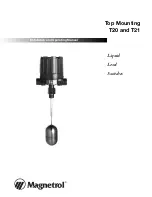
C H A P T E R
5
Configuring Rapid PVST+
This chapter contains the following sections:
•
Information About Rapid PVST+, page 43
•
Configuring Rapid PVST+, page 58
•
Verifying the Rapid PVST+ Configuration, page 66
Information About Rapid PVST+
The Rapid PVST+ protocol is the IEEE 802.1w standard, Rapid Spanning Tree Protocol (RSTP), implemented
on a per VLAN basis. Rapid PVST+ interoperates with the IEEE 802.1D standard, which mandates a single
STP instance for all VLANs, rather than per VLAN.
Rapid PVST+ is enabled by default on the default VLAN (VLAN1) and on all newly created VLANs in the
software. Rapid PVST+ interoperates with switches that run legacy IEEE 802.1D STP.
RSTP is an improvement on the original STP standard, 802.1D, which allows faster convergence.
Spanning tree is used to refer to IEEE 802.1w and IEEE 802.1s. If the text is discussing the IEEE 802.1D
Spanning Tree Protocol, 802.1D is stated specifically.
Note
Understanding STP
STP Overview
For an Ethernet network to function properly, only one active path can exist between any two stations.
When you create fault-tolerant internetworks, you must have a loop-free path between all nodes in a network.
The STP algorithm calculates the best loop-free path throughout a switched network. LAN ports send and
receive STP frames, which are called Bridge Protocol Data Units (BPDUs), at regular intervals. Switches do
not forward these frames but use the frames to construct a loop-free path.
Cisco Nexus 6000 Series NX-OS Layer 2 Switching Configuration Guide, Release 7.x
43
















































